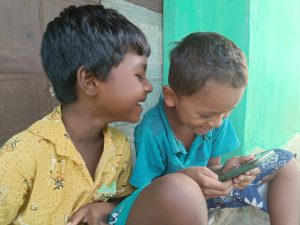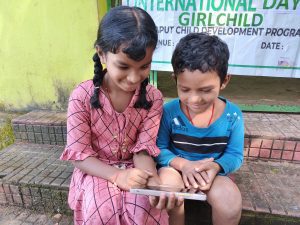The educational landscape in the twenty-first century is undergoing a revolutionary shift, emphasizing the development of abilities that equip students for the challenges of an ever-changing global society. Secondary education, in particular, is critical in developing young minds and cultivating the abilities required for success in the modern world. One key part of this paradigm shift is the emphasis on 21st-century skills and how these abilities contribute to closing the gender gap in schooling. 21st Century Skills refer to the skills that are required to enable an individual to face the challenges of the 21st century world that is globally active, digitally transforming, collaboratively moving forward, creatively progressing, seeking competent human-resource and quick in adopting changes. In the realm of 21st-century skills, three key categories are commonly recognized and known as the 3 Ls: Learning Skills, Literacy Skills, and Life Skills.
Importance of 21st-Century Skills
At the core of this paradigm shift are 21st-century skills, a set of competencies that go beyond standard academic knowledge. These talents are built on critical thinking, creativity, problem solving, communication, cooperation, and digital literacy. In an age of technology breakthroughs and interconnection, developing these skills is not only desirable but also necessary.
These skills are not limited to academic accomplishment; they are also essential in preparing students for the demands of the modern workforce. Individuals with the ability to think critically and solve difficult challenges, as well as good communication and teamwork abilities, are better positioned to manage an ever-changing professional world. By incorporating 21st-century skills into secondary school, we are paving the path for a generation of students who are ready to contribute meaningfully to society while overcoming gender-based barriers.
National Education Policy 2020 and 21st Century Skills
The National Education Policy 2020 (NEP 2020) serves as a visionary framework, addressing the critical need for students to develop 21st-century capabilities. Recognizing the changing demands of the modern world, NEP 2020 offers a strong emphasis on developing critical thinking and problem-solving skills. Instead of traditional rote learning, the strategy promotes an inquiry-based approach, cultivating a culture of critical thinking. Furthermore, NEP 2020 emphasizes the critical importance of good communication and collaboration, promoting interactive teaching techniques and collaborative projects to strengthen interpersonal and teamwork skills.
Creativity is recognised as a cornerstone of holistic education, with NEP 2020 calling for the combination of arts and vocational topics to help students realise their creative potential. The policy, which takes a multidisciplinary approach, removes artificial topic barriers, recognizing the real-world necessity for knowledge convergence. Experiential learning is prioritized, with NEP 2020 supporting internships and hands-on experiences to supplement theoretical knowledge. Furthermore, NEP 2020 aspires to close the gender gap in education by promoting equal access and fostering a supportive atmosphere. It emphasises the value of girls’ education, focuses on gender-sensitive curricula, and promotes steps to create a safe and secure learning environment for all students, regardless of gender. The policy envisions a fairer educational landscape that promotes possibilities for both girls and boys.
Current Issues in Gender Gap
Despite advances in educational equality, gender discrepancies in secondary school persist. Girls are still facing a variety of obstacles that limit their educational progress. Traditional gender norms are frequently imposed by society, restricting female students’ perceived potential. Economic constraints worsen the problem even further, particularly in resource-scarce places. Furthermore, deeply ingrained societal biases may discourage girls from choosing specific academic and professional paths. According to a voices survey, out of every 10 youth surveyed, about 4 had come across the terms ‘life skills’ or ’21st Century skills.’ More of the older participants and those who had spent more years in school knew about “life skills” compared to the younger ones and those with fewer years of education.
STEM education in particular, has been a focal area for gender-related issues. Stereotypes and cultural expectations frequently dissuade females from pursuing STEM topics, sustaining a gender gap in these important sectors. STEM (Science, Technology, Engineering, and Mathematics) forms the bedrock of innovation and societal progress. As we enter an era shaped by advancements in Artificial Intelligence, Robotics, and Biotechnology, it’s crucial to equip the next generation with the skills needed for success. Fostering curiosity, critical thinking, and problem-solving is key. India boasts 31.7% of global STEM graduates and a significant STEM job market. However, there’s a gender gap: only 26% of female students pursue higher education in STEM, and women constitute just 14% of the STEM workforce in India, as per AISHE 2020-2021 and the National Science Foundation reports.
To properly address these difficulties, a holistic strategy that addresses both academic and socio-cultural components of education is required.
Suggestions for Bridging the Gap
In order to create equity and inclusivity in secondary school, it is critical to not only recognise the current gender gap, but also to actively participate in developing ways to bridge it. As we explore deeper into the multidimensional problem of gender inequality, our focus switches to real ideas and tangible initiatives. The following recommendations provide a holistic approach aimed at creating an educational landscape that not only is equitable but also equips all students, regardless of gender, with the fundamental 21st-century skills required to navigate a constantly changing world.
- Curriculum Reforms: One of the primary strategies for addressing the gender gap is through curriculum reforms that integrate 21st-century skills into the educational framework. Traditional models of rote memorization must give way to dynamic, experiential learning approaches. Project-based learning, collaborative activities, and interdisciplinary approaches can infuse the curriculum with opportunities for students to develop critical thinking, creativity, and collaboration skills. This approach not only fosters a deeper understanding of academic content but also cultivates the problem-solving skills necessary for success in the 21st century.
- Teacher Training: Central to the success of any educational reform is the capacity of educators to adapt and implement changes effectively. Teacher training programs that focus on integrating 21st-century skills into teaching methodologies are essential. Moreover, providing educators with training in gender-sensitive teaching strategies is crucial for creating an inclusive learning environment. Professional development opportunities can empower teachers to employ innovative and inclusive teaching methods, ensuring that both male and female students benefit from an education that recognizes and nurtures their individual strengths.
- STEM Education for All: To address the gender gap in STEM fields, concerted efforts must be made to encourage girls to pursue these subjects. Equal access to resources, mentorship programs, and exposure to successful female role models in STEM can challenge stereotypes and inspire young girls to engage with these disciplines.
- Integration of Technology: Incorporating technology into the educational scene is a game changer for closing the gender gap. Students have equitable access to instructional materials because of digital platforms, interactive learning apps, and online resources. Furthermore, technology allows for personalized learning experiences that adapt to a variety of learning styles and interests.
- Community Engagement: Educational initiatives must extend beyond the school walls, involving parents, communities, and external organizations. Establishing partnerships that create a supportive network for students, irrespective of gender, can significantly impact their educational journey. Community engagement can play a pivotal role in challenging ingrained gender norms and biases. By fostering an environment that values and supports the education of both boys and girls, communities become catalysts for positive change. Additionally, involving local organizations can supplement educational resources, further enhancing the overall learning experience.
– Ashique Ali, Sr. Specialist (Secondary and Higher Education) ChildFund India





